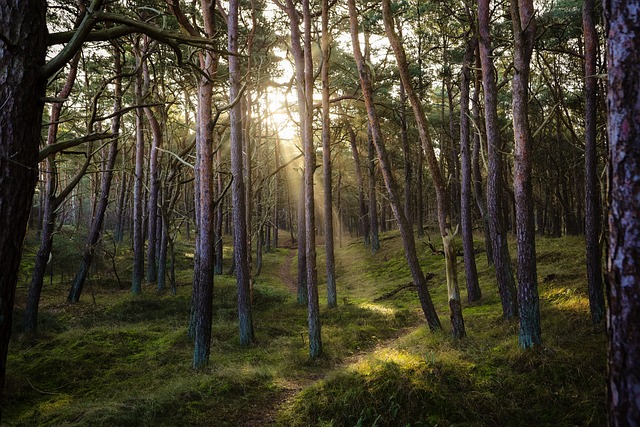Every choice we make — right up to our final one — can have a lasting impact on the environment we leave behind for future generations. But while many people are now aware of eco-friendly funeral options such as green burials, resomation or human composting, not that many are likely to have thought of donating their body to medical science or a body farm. So, how does it work? What do you need to know? And could this be the right option for you?
Why consider body donation?

First things first: why should we even think about donating our bodies to science or body farms? Well, it’s all about giving back and making a difference, even when we’re no longer around to see it.
- Environmental impact: Traditional burials and cremations can leave a significant environmental footprint. Think about the resources used in caskets, the land occupied by cemeteries, or the energy consumed and emissions produced during cremation. By donating your body, you’re choosing a path that minimizes these impacts.
- Advancing medical science: Your donation could help train future doctors, contribute to groundbreaking research, or even assist in developing new treatments that could save countless lives.
- Forensic science: Body farms use donations to study human decomposition, which can help to solve crimes and bring closure to families of missing persons.
- Cost-effective: Let’s face it, the cost of funerals — even simpler, natural burials — can easily add up. Body donation is often free and can relieve your loved ones of financial burdens during an already difficult time.
- A lasting legacy: Your final act could be one that contributes to the greater good of humanity. Now that’s something to be proud of!
The donation process
So, you’re intrigued by the idea of body donation. Great! But how exactly does it work? While the specifics can vary depending on where you live, the general process is similar regardless of where you live. Let’s break it down:
Step 1: Make your decision
The first step is to decide if body donation is right for you. Talk it over with your family and loved ones. Their support will be crucial in ensuring your wishes are carried out.
Step 2: Choose a program
Research body donation programs in your area. Universities with medical schools often have their own programs, or you might opt for a body farm if one is available near you.
Step 3: Register your intent
Once you’ve chosen a program, you’ll need to register your intent to donate. This usually involves filling out some paperwork and providing basic medical information.
Step 4: Inform your loved ones
Make sure your family knows about your decision and has the contact information for the donation program. In many cases, they’ll be the ones to initiate the donation process when the time comes.
What happens after donation?
You’re probably wondering what exactly happens to your body once it’s been donated. While it can vary depending on the specific program, here’s a general overview:
- Transportation: When the time comes, the donation program will arrange for your body to be transported to their facility.
- Initial procedures: Your body will be carefully prepared and preserved for its intended use.
- Education and research: If donated to a medical school, your body may be used to teach anatomy to future doctors. In research settings, it might contribute to studies on new surgical techniques or medical devices.
- Body farms: At body farms, your remains will be placed in a secure outdoor facility where researchers can study the natural decomposition process.
- Cremation: After studies are complete (which can take anywhere from a few months to a few years), most medical research programs will cremate the remains at no cost to the family.
- Return of ashes: Many programs offer to return the cremated remains to the family if desired.
Donation options around the world
Let’s take a quick tour around the globe to see how body donation works in different countries:
United States
In the US, most medical schools have body donation programs. The University of Tennessee’s Anthropology Research Facility (the original “Body Farm”) accepts donations for forensic research. To donate, contact a local medical school or check out the Anatomical Board of the State of Florida, which provides a comprehensive list of programs nationwide.
United Kingdom
The Human Tissue Authority oversees body donation in the UK. You can find a list of medical schools accepting donations on their website. The process is similar to the US, but there’s no body farm option currently available in the UK.
Australia
Australian universities manage their own body donation programs. The Australian Facility for Taphonomic Experimental Research (AFTER) is the country’s only body farm, located in Sydney. Check with your local university or visit the AFTER website for more information.
New Zealand
In New Zealand, the University of Otago’s Bequest Program is the primary body donation program. They accept donations for medical education and research. You can find more information on their website.
Conclusion
Remember, the choice to donate your body is a personal one, and it’s okay if it’s not for you. There are many other ways to have an eco-friendly end-of-life plan, from green burials to biodegradable urns that grow into trees.
What matters most is that we think about these issues and make choices that align with our values. By considering the environmental impact of our final arrangements, we’re showing love not just for our families, but for the entire planet and all the generations to come.
So, explore your options, talk to your loved ones about your wishes, and then make the decision that feels right for you.
